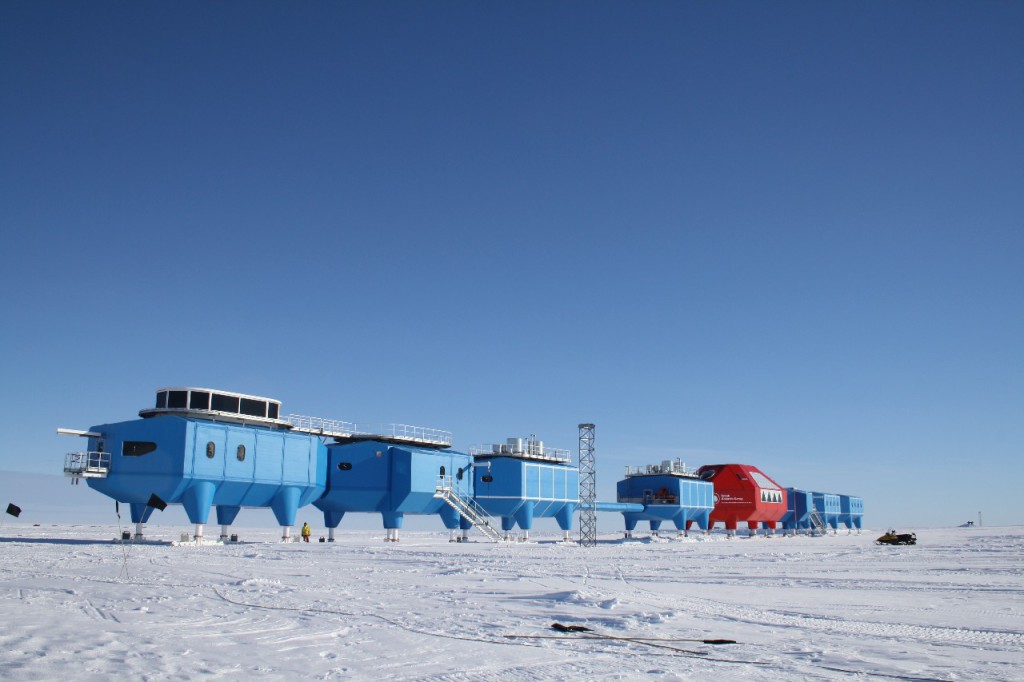New Architecture and Science in Antarctica 26 Jul – 02 Oct Gallery Two, The Lighthouse, Glasgow

Commissioned by the British Council and curated by the Arts Catalyst, Ice Lab: New Architecture and Science in Antarctica is a new international touring exhibition that illustrates how innovative contemporary architecture is enabling scientists to live and work in one of the most extreme environments on our planet.
The exhibition features five imaginative designs for Antarctic research stations from the newly opened British Antarctic Survey’s Halley VI Research station to the speculative Iceberg Living Station. Ice Lab will give visitors a unique view of the inspiration, ingenuity and creativity behind architecture in the coldest, windiest, driest and most isolated place on earth.
The first exhibition of its kind, Ice Lab includes architectural drawings, models, photographs and films that give the visitor a sense of what it takes to live and work in Antarctica. Sources of inspiration for the projects including original drawings from Archigram’s ‘Walking City’ are on display as well as a new commissioned light and audio work by international visual artist Torsten Laushmann.
Ice Lab highlights the diverse and cutting edge science that takes place on the frozen continent — from collecting 4.5 billion year old meteorites that illuminate how the solar system was formed to drilling ice cores whose bubbles of ancient air reveal the earth’s climate history; from cutting edge astronomy peering into the world’s clearest skies to studying its Dry Valleys, the closest thing to ‘Mars on Earth’.
The exhibition features British Antarctic Survey’s Halley VI. The first fully relocatable polar research station in the world became fully operational in February 2013 and signals a new dawn for 21st Century polar research. Opening 100 years after Captain Scott’s famed Antarctic expeditions, this new state of the art facility, designed by Hugh Broughton Architects and engineered by AECOM (UK) fulfils the UK’s ambition to remain at the forefront of scientific endeavour. Located 10,000 miles from the UK on a floating ice shelf, the new station is designed to be self-sufficient, able to withstand freezing winter temperatures of minus 55ºC, have minimal impact on Antarctica’s pristine environment, and be an aesthetically stimulating place to live and work.
